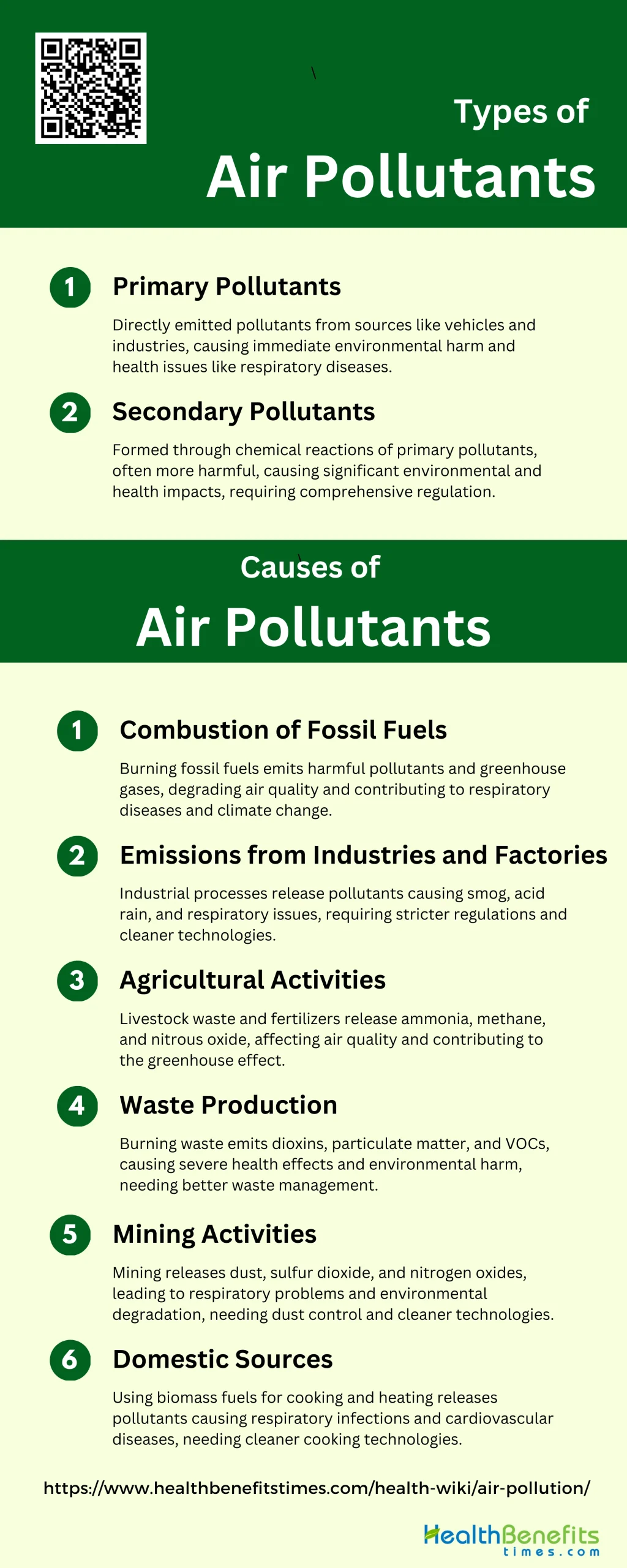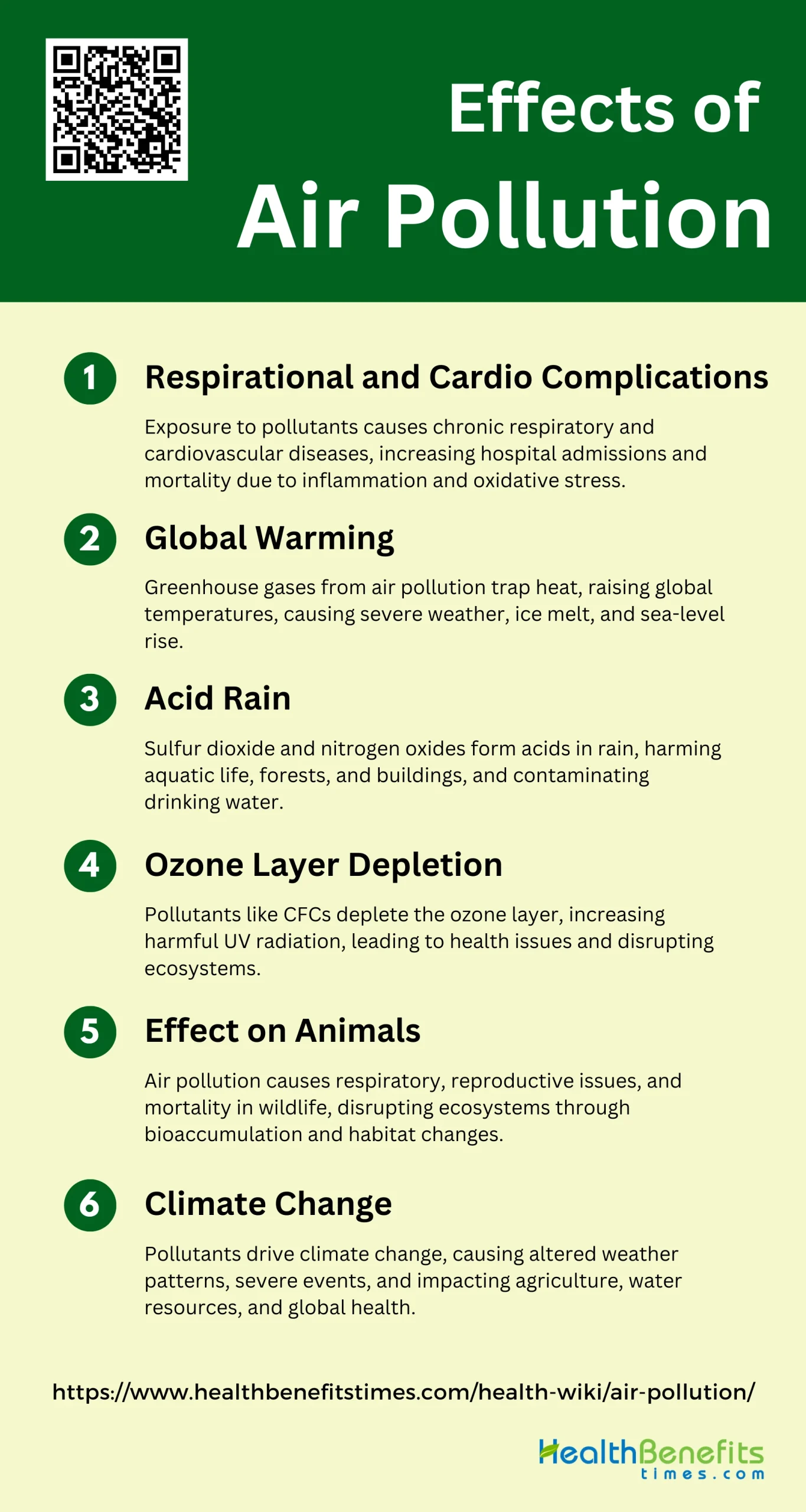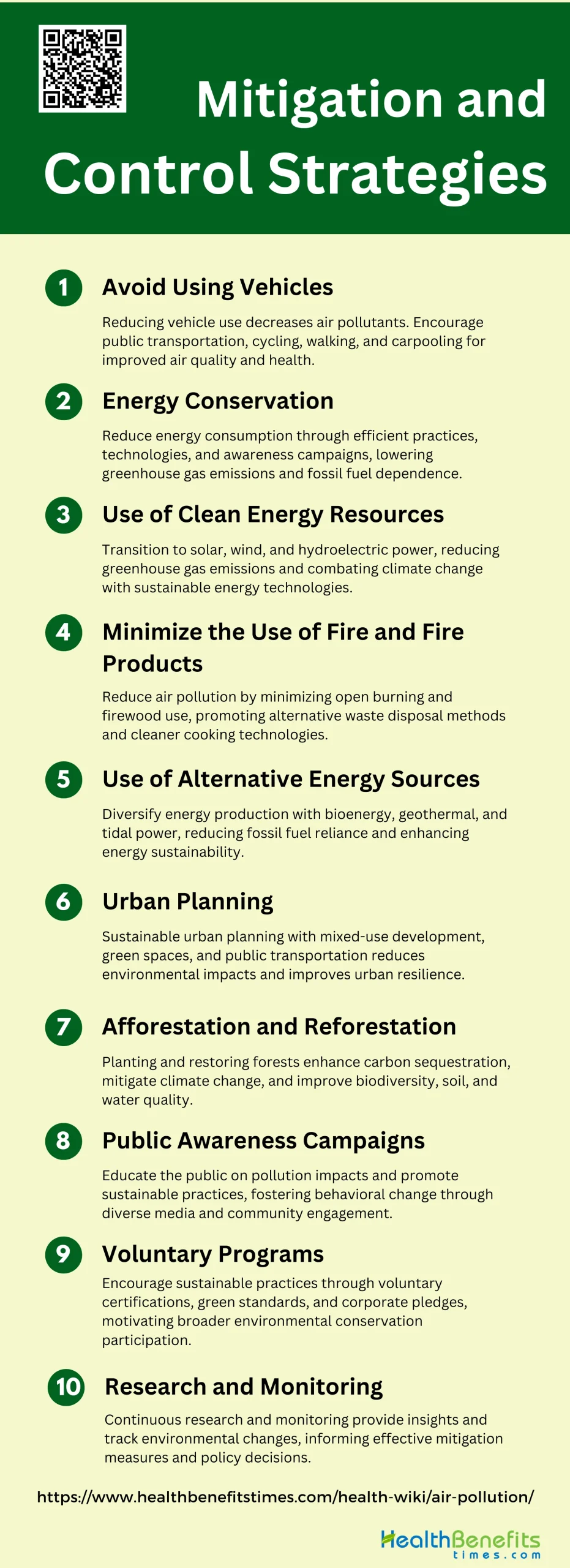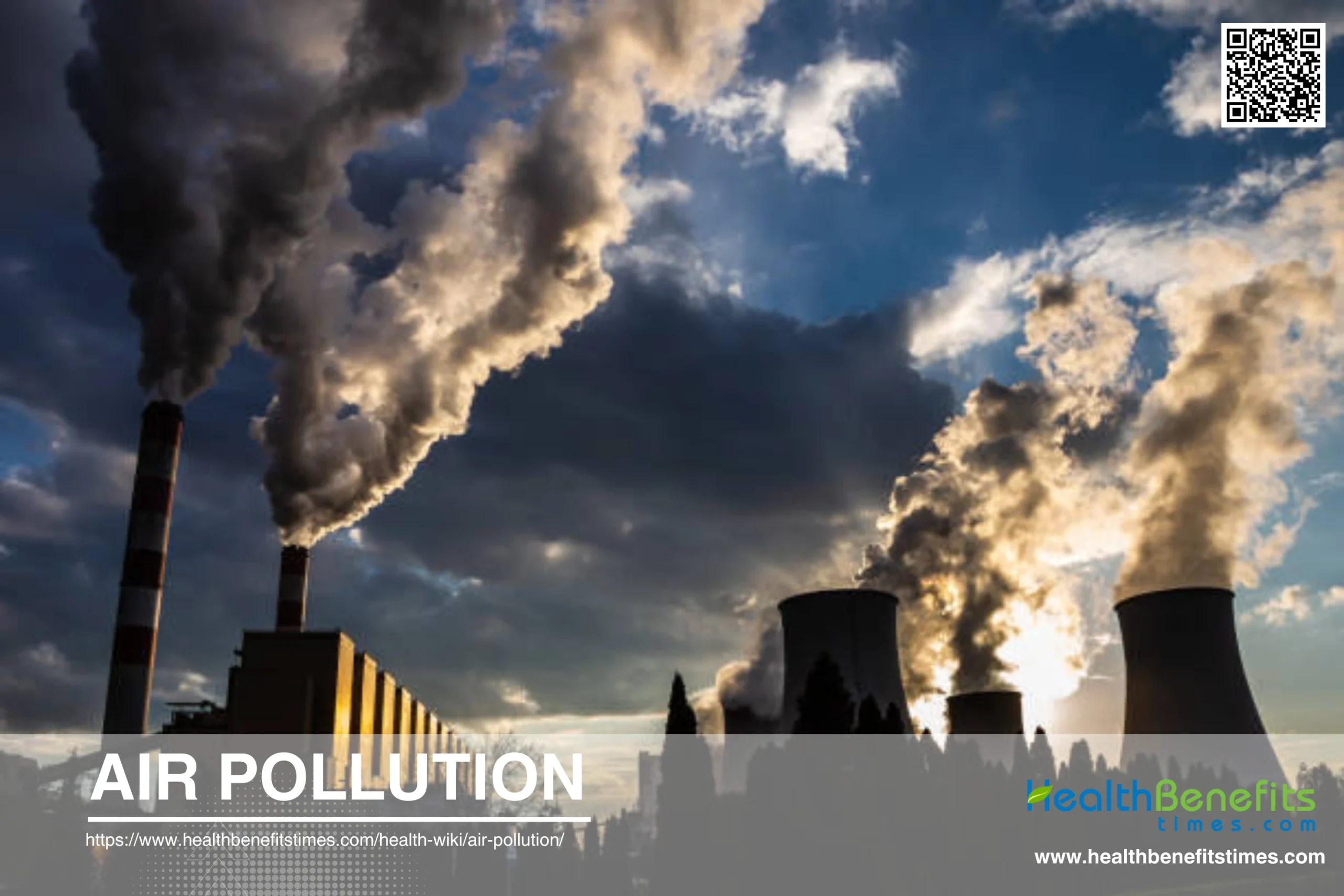 Air pollution is the contamination of the air by harmful substances, including gases, particles, and biological molecules, which pose significant risks to human health and the environment. These pollutants can originate from various sources such as the burning of fossil fuels, industrial emissions, agricultural activities, and household products. Primary pollutants, like sulfur dioxide from factories, are directly emitted, while secondary pollutants, such as smog, form through chemical reactions in the atmosphere. The adverse effects of air pollution include respiratory and cardiovascular diseases, global warming, acid rain, and ozone layer depletion, making it a critical environmental and public health issue
Air pollution is the contamination of the air by harmful substances, including gases, particles, and biological molecules, which pose significant risks to human health and the environment. These pollutants can originate from various sources such as the burning of fossil fuels, industrial emissions, agricultural activities, and household products. Primary pollutants, like sulfur dioxide from factories, are directly emitted, while secondary pollutants, such as smog, form through chemical reactions in the atmosphere. The adverse effects of air pollution include respiratory and cardiovascular diseases, global warming, acid rain, and ozone layer depletion, making it a critical environmental and public health issue
Types of Air Pollutants
The contaminants that taint our atmosphere come in various forms, each with its own source and impact. Below is a list of the primary types of air pollutants that affect the quality of the air we breathe.
1. Primary Pollutants
Primary pollutants are directly emitted into the atmosphere from various sources and can cause immediate harm to the environment and human health. These pollutants include substances such as nitric oxide, nitrogen dioxide, and hydrocarbons, which are released from industrial processes, vehicle emissions, and other anthropogenic activities. The direct release of these pollutants into the air leads to elevated concentrations that can adversely affect air quality and contribute to respiratory and cardiovascular diseases. For instance, a study by researchers at the University of North Carolina found that exposure to a mixture of primary pollutants altered the expression of 19 genes in human epithelial lung cells, indicating significant biological impacts.
2. Secondary Pollutants
Secondary pollutants are not emitted directly into the atmosphere but are formed through chemical reactions involving primary pollutants. These reactions often occur under the influence of sunlight, leading to the formation of substances such as ozone, formaldehyde, and peroxyacetyl nitrate. Secondary pollutants can be more harmful than their primary counterparts due to their complex chemical nature and the potential for widespread environmental and health impacts. Research has shown that exposure to secondary pollutants can significantly alter gene expression and increase markers of cell injury and death. For example, a study found that exposure to secondary pollutants resulted in the alteration of 709 genes and a ninefold increase in the release of lactate dehydrogenase, a marker of cell injury, compared to primary pollutants2. This highlights the need for comprehensive air pollution regulations that consider both primary and secondary pollutants to protect public health effectively.
Causes of Air Pollution
Air pollution is a complex issue with a multitude of contributing factors that vary across different regions and industries. These causes range from natural phenomena to human activities that release harmful substances into the atmosphere. Below, we outline the key causes of air pollution that are impacting our environment and health.
1. Combustion of Fossil Fuels

The combustion of fossil fuels, such as coal, oil, and natural gas, is a primary source of air pollution. This process releases a variety of harmful pollutants, including carbon monoxide (CO), sulfur dioxide (SO₂), nitrogen oxides (NOx), volatile organic compounds (VOCs), and particulate matter (PM2.5 and PM10) into the atmosphere. These pollutants contribute to the degradation of air quality and have significant adverse effects on human health, including respiratory and cardiovascular diseases. The burning of fossil fuels is also a major contributor to climate change due to the emission of greenhouse gases like carbon dioxide (CO₂)0.
2. Emissions from Industries and Factories
Industrial activities and factories are significant sources of air pollution. They emit large quantities of pollutants, including sulfur dioxide (SO₂), nitrogen oxides (NOx), particulate matter (PM), and various toxic chemicals. These emissions result from processes such as the burning of fossil fuels for energy, chemical manufacturing, and metal processing. Industrial emissions contribute to smog formation, acid rain, and respiratory problems in humans. The introduction of stricter regulations and cleaner technologies is essential to mitigate the impact of industrial emissions on air quality.
3. Agricultural Activities
Agricultural activities contribute to air pollution through the release of ammonia (NH₃), methane (CH₄), and nitrous oxide (N₂O) from livestock waste and the use of fertilizers. These emissions can lead to the formation of secondary particulate matter and contribute to the greenhouse effect. Additionally, the burning of crop residues releases particulate matter and other pollutants into the air, affecting air quality and human health. Implementing sustainable agricultural practices and reducing the use of chemical fertilizers can help mitigate the impact of agricultural activities on air pollution.
4. Waste Production
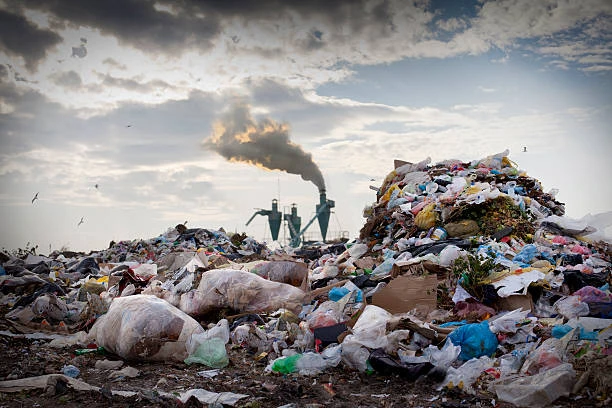
Waste production and disposal, including the incineration of garbage, are significant sources of air pollution. The burning of waste materials releases a variety of harmful pollutants, including dioxins, furans, particulate matter (PM), and volatile organic compounds (VOCs). These pollutants can have severe health effects, including respiratory and cardiovascular diseases, and contribute to environmental degradation. Proper waste management practices, such as recycling and reducing waste generation, are essential to minimize the impact of waste production on air quality.
5. Mining Activities
Mining activities contribute to air pollution through the release of dust and particulate matter (PM) during the extraction and processing of minerals. The use of heavy machinery and explosives in mining operations also releases pollutants such as sulfur dioxide (SO₂) and nitrogen oxides (NOx) into the atmosphere. These emissions can lead to respiratory problems and environmental degradation. Implementing dust control measures and adopting cleaner mining technologies can help reduce the impact of mining activities on air quality.
6. Domestic Sources
Domestic sources of air pollution include the use of biomass fuels (such as wood, coal, and crop residues) for cooking and heating, particularly in developing countries. The incomplete combustion of these fuels releases pollutants such as carbon monoxide (CO), particulate matter (PM), and polycyclic aromatic hydrocarbons (PAHs) into indoor and outdoor air. Exposure to these pollutants is associated with respiratory infections, lung cancer, and cardiovascular diseases. Promoting the use of cleaner cooking technologies and alternative energy sources can significantly reduce the health risks associated with domestic air pollution.
Effects of Air Pollution
Air pollution, a pervasive environmental challenge, has far-reaching impacts on human health, ecosystems, and the global climate. Its effects are both immediate and long-term, altering the quality of life and the natural balance of our planet. Below is a list detailing the various consequences of this growing concern.
1. Respirational and Cardio Complications
Air pollution has significant adverse effects on both respiratory and cardiovascular health. Exposure to pollutants such as particulate matter (PM2.5 and PM10), carbon monoxide (CO), sulfur dioxide (SO2), and nitrogen oxides (NOx) can lead to a range of health issues. These include chronic respiratory diseases like asthma and chronic obstructive pulmonary disease (COPD), as well as cardiovascular diseases such as myocardial infarction and heart failure. The mechanisms involve inflammation, oxidative stress, and activation of pro-inflammatory pathways, which can exacerbate pre-existing conditions and lead to increased hospital admissions and mortality rates.
2. Global Warming
Air pollution contributes significantly to global warming through the emission of greenhouse gases such as carbon dioxide (CO2), methane (CH4), and nitrous oxide (N2O). These gases trap heat in the atmosphere, leading to an increase in global temperatures. Additionally, pollutants like black carbon and ozone also play a role in warming the atmosphere. The increase in temperature can lead to severe weather events, melting of polar ice caps, and rising sea levels, which have far-reaching impacts on ecosystems and human societies.
3. Acid Rain
Acid rain is primarily caused by the emission of sulfur dioxide (SO2) and nitrogen oxides (NOx) into the atmosphere, which then react with water vapor to form sulfuric and nitric acids. These acids fall to the ground with precipitation, leading to the acidification of soils and water bodies. Acid rain can harm aquatic life, damage forests, and degrade buildings and monuments. It also affects human health indirectly by contaminating drinking water sources and reducing agricultural productivity.
4. Ozone Layer Depletion
Certain air pollutants, particularly chlorofluorocarbons (CFCs) and halons, contribute to the depletion of the ozone layer. The ozone layer is crucial for protecting life on Earth from harmful ultraviolet (UV) radiation. Depletion of this layer increases the risk of skin cancer, cataracts, and other health issues in humans. It also affects ecosystems, particularly marine life, by disrupting the food chain and reducing biodiversity.
5. Effect on Animals
Air pollution affects animals in various ways, similar to its impact on human health. Pollutants can cause respiratory issues, reproductive problems, and even mortality in wildlife. For instance, heavy metals and toxic chemicals can accumulate in the food chain, leading to bioaccumulation and biomagnification. This not only affects individual species but can also disrupt entire ecosystems. Additionally, acid rain and global warming further exacerbate these issues by altering habitats and food availability.
6. Climate Change
Air pollution is a significant driver of climate change. Greenhouse gases like CO2, methane, and nitrous oxide contribute to the greenhouse effect, leading to global warming. This warming results in climate changes such as altered precipitation patterns, more frequent and severe weather events, and shifts in ecosystems and biodiversity. The impact of climate change is profound, affecting agriculture, water resources, and human health on a global scale.
Mitigation and Control Strategies
In the face of potential risks and issues, it is essential to have robust mitigation and control strategies in place. These strategies serve as a proactive framework to anticipate challenges and implement measures to minimize impact. Following this paragraph, a list of such strategies will be presented to guide effective risk management and control.
1. Avoid Using Vehicles
Reducing vehicle usage is a critical strategy for mitigating environmental pollution and conserving natural resources. Vehicles are significant sources of air pollutants, including carbon monoxide, nitrogen oxides, and particulate matter, which contribute to air quality degradation and adverse health effects. Encouraging the use of public transportation, cycling, walking, and carpooling can significantly reduce the number of vehicles on the road, thereby decreasing emissions. Additionally, urban planning that promotes mixed-use development and compact city designs can reduce the need for long commutes and encourage more sustainable modes of transportation.
2. Energy Conservation
Energy conservation involves reducing energy consumption through efficient practices and technologies. This strategy not only lowers greenhouse gas emissions but also reduces the demand for energy production, which often relies on fossil fuels. Implementing energy-efficient appliances, improving building insulation, and adopting smart grid technologies are effective measures. Public awareness campaigns and policies that incentivize energy-saving behaviors can further enhance conservation efforts. By reducing energy consumption, we can mitigate the environmental impacts associated with energy production and contribute to a more sustainable future.
3. Use of Clean Energy Resources
Transitioning to clean energy resources, such as solar, wind, and hydroelectric power, is essential for reducing greenhouse gas emissions and combating climate change. Clean energy technologies produce little to no emissions during operation, making them a sustainable alternative to fossil fuels. Investments in renewable energy infrastructure, along with supportive policies and incentives, can accelerate the adoption of clean energy. Additionally, advancements in energy storage and grid integration are crucial for ensuring the reliability and efficiency of renewable energy systems.
4. Minimize the Use of Fire and Fire Products
Minimizing the use of fire and fire products, such as open burning and firewood, can significantly reduce air pollution and associated health risks. Open burning releases harmful pollutants, including particulate matter and volatile organic compounds, which can degrade air quality and contribute to respiratory problems. Promoting alternative methods for waste disposal, such as composting and recycling, and encouraging the use of cleaner cooking technologies can help mitigate these impacts. Public education on the environmental and health consequences of open burning is also essential for fostering behavioral change.
5. Use of Alternative Energy Sources
Utilizing alternative energy sources, such as bioenergy, geothermal, and tidal power, can diversify the energy mix and reduce dependence on fossil fuels. These sources offer sustainable and often locally available options for energy production. Research and development in alternative energy technologies can enhance their efficiency and cost-effectiveness, making them more viable for widespread adoption. Policies that support innovation and investment in alternative energy can drive the transition towards a more sustainable energy system.
6. Urban Planning
Effective urban planning is crucial for creating sustainable and resilient cities. Strategies such as mixed-use development, green spaces, and efficient public transportation systems can reduce environmental impacts and improve quality of life. Urban planning that prioritizes sustainability can help mitigate air pollution, reduce energy consumption, and enhance climate resilience. Incorporating green infrastructure, such as parks and green roofs, can also provide ecosystem services, such as air purification and temperature regulation.
7. Afforestation and Reforestation
Afforestation and reforestation are vital strategies for enhancing carbon sequestration and restoring degraded ecosystems. Planting trees and restoring forests can absorb carbon dioxide from the atmosphere, mitigate climate change, and provide habitat for biodiversity. These practices also offer additional benefits, such as soil stabilization, water regulation, and improved air quality. Supporting afforestation and reforestation initiatives through policies, funding, and community engagement can significantly contribute to environmental sustainability.
8. Public Awareness Campaigns
Public awareness campaigns play a crucial role in promoting environmental conservation and sustainable practices. Educating the public about the impacts of pollution, climate change, and resource depletion can foster behavioral change and support for mitigation strategies. Campaigns can utilize various media platforms, community events, and educational programs to reach diverse audiences. Engaging stakeholders, including schools, businesses, and local governments, can amplify the impact of these campaigns and encourage collective action.
9. Voluntary Programs
Voluntary programs encourage individuals and organizations to adopt sustainable practices beyond regulatory requirements. These programs can include initiatives such as energy efficiency certifications, green building standards, and corporate sustainability pledges. By recognizing and rewarding voluntary efforts, these programs can motivate broader participation and innovation in environmental conservation. Collaboration between government, industry, and civil society is essential for designing and implementing effective voluntary programs.
10. Research and Monitoring
Ongoing research and monitoring are essential for understanding environmental changes and developing effective mitigation strategies. Scientific research can provide insights into the sources and impacts of pollution, climate change, and resource depletion. Monitoring programs can track environmental indicators, assess the effectiveness of mitigation measures, and inform policy decisions. Investing in research and monitoring infrastructure, as well as fostering interdisciplinary collaboration, can enhance our capacity to address environmental challenges.


